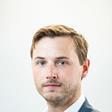The air forces of Norway, the UK and the USA have teamed up to conduct live-fire air-to-ground training strikes on Norwegian territory.
The trilateral exercise, called APEX Buccaneer, took place on 3 December, according to the US Air Force’s (USAF’s) European headquarters, which described the goal of the manoeuvres as practising the strike sequence known as “find, fix, track and target”, or F2T2.
Often called a “kill chain”, the process involves identifying and locating enemy assets, conducting surveillance and striking with lethal effect.

In the latest F2T2 drills over Norway, the three allies made use of the sensor-data-sharing capabilities of the Lockheed Martin F-35 stealth fighter to establish and complete a kill chain.
The USAF, UK Royal Air Force/Royal Navy and Royal Norwegian Air Force (RNoAF) all operate F-35s, with the American and Norwegian services flying the conventional take-off and landing F-35A and the UK flying the short take-off and landing F-35B jump-jet version.
“Fifth-generation platforms are pivotal to maintaining air superiority in contested spaces, and exercises like this showcase their unmatched capability,” says General James Hecker, commander of US Air Forces in Europe and Africa.
During the F2T2 exercise, F-35 pilots from the three services exchanged tactical information in real time, which the USAF says created a “unified air picture and demonstrated the aircraft’s ability to operate as a force multiplier”.
This ability has been touted by the Pentagon and Lockheed as one of the main justifications for the expensive and maintenance-challenged stealth fighter.
Numerous other aircraft served as critical links during the live-fire training.
Surveillance and reconnaissance support were provided by a Boeing P-8A Poseidon maritime patrol aircraft from the RNoAF, a Lockheed U-2 high-altitude spy jet from the USAF and a Boeing RC-135 Rivet Joint intelligence collection platform from the RAF.

American Boeing KC-135 Stratotankers and UK Airbus Defence & Space A330 Voyagers provided tanking support over the North Sea, while strike assets came in the form of USAF Boeing B-52 heavy bombers and RAF Eurofighter Typhoons, in addition to F-35s.
Ground-based joint terminal attack controllers from Norway directed the lethal payloads to designated targets.
The multi-nation collaboration, known as interoperability within NATO, is viewed as essential to the effective functioning of the 32-nation mutual defence alliance.
“Interoperability is vital to the defence of NATO’s northern flank,” says Group Captain Hannah Bishop, head of operational plans for the RAF.
Norway sits on the frontline of that northern flank, though the longtime NATO member’s geographic position has been bolstered by the more-recent entry into the alliance of neighbouring Finland and Sweden.
“The event provides an opportunity to develop, exercise and integrate our air command and control capability, to include F2T2, with close allies,” says Brigadier General Tron Strand, commander of Norway’s Joint Air Operations Center. “Together we are a credible deterrent, and if required, we are ready to defend the Arctic region.”































